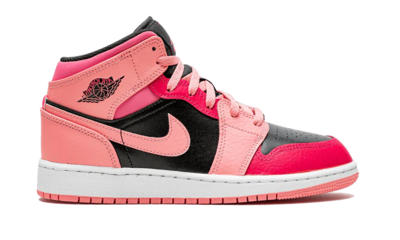
1. Design Considerations
Aesthetic Appeal: The upper sets the visual tone of the sneaker, influencing its overall design language and brand identity.
Functionality: It must provide support, flexibility, and comfort while aligning with the intended use of the sneaker (e.g., running, casual wear).
Fit: Proper fit is critical for comfort and performance, requiring precise design and material choices.
2. Materials Used
Leather: Provides durability, comfort, and a premium look. It can be full-grain (natural appearance) or synthetic leather (more affordable).
Mesh: Offers breathability, making it ideal for athletic and casual sneakers. Mesh can vary in density and texture.
Canvas: Known for its durability and casual appeal, canvas is often used in lifestyle and skateboarding sneakers.
Synthetic Fabrics: Offer versatility, moisture-wicking properties, and can mimic the look of natural materials.
Knit: Increasingly popular for its flexibility, breathability, and sock-like fit. Different knitting techniques offer various textures and patterns.
Suede: Adds a luxurious feel and texture, often used in fashion-forward or premium sneakers.
Flyknit: Nike's proprietary knit material designed for lightweight support and breathability, particularly for performance sneakers.
3. Construction Techniques
Stitching: Traditional method where panels of material are stitched together. Provides durability and structural integrity.
Bonding: Using adhesives to attach materials, offering a seamless look and lightweight feel.
Knitting: Utilizing advanced knitting machines to create one-piece uppers that offer a sock-like fit and minimal seams.
Overlay Application: Adding layers of materials (e.g., synthetic overlays, leather patches) for reinforcement and style.
4. Design Elements
Toe Box: Front portion of the upper that covers the toes. Its shape affects comfort and aesthetic appeal.
Eyelets: Holes or rings where laces pass through, influencing fit and style.
Tongue: Padding or material extension under the laces, providing comfort and preventing rubbing.
Collar: Padding around the ankle area for support and comfort. Higher collars can provide ankle stability.
Heel Counter: Firm material in the rear of the upper that stabilizes the heel and enhances fit.
5. Performance and Fashion Integration
Athletic Sneakers: Focus on lightweight materials, breathability, and support for dynamic movements.
Fashion Sneakers: Emphasis on style, using premium materials and intricate detailing to enhance visual appeal.
Versatility: Many sneakers blend performance attributes with fashionable designs, catering to diverse consumer preferences.
Conclusion
The upper of a sneaker is not only about style but also about functionality and comfort. Designers must balance material choices, construction techniques, and aesthetic considerations to create sneakers that appeal to both performance-driven athletes and fashion-conscious consumers. By leveraging innovative materials and construction methods, sneakers can achieve the perfect blend of form and function in a competitive market.



